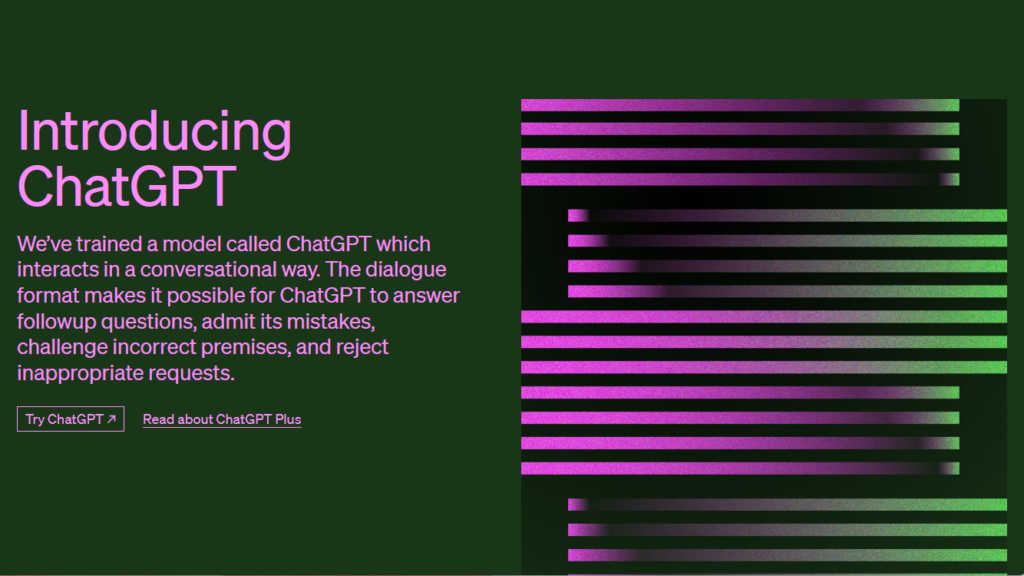How to Create Effective Prompts for ChatGPT: Tips and Examples
by Ready For AI · Published · Updated
A good prompt is critical to using ChatGPT effectively because it determines the quality and relevance of the response generated by the AI language model. ChatGPT is a powerful tool that can generate responses to a wide range of prompts, but it requires clear and specific inputs to provide accurate and relevant outputs. Without a good prompt, ChatGPT may provide irrelevant or inaccurate responses that do not address the user's query or provide the desired information.

As an AI language model, ChatGPT is designed to generate text that responds to the prompts given to it. The quality of the prompts provided directly affects the quality of the responses generated by the model. Therefore, if you want to get the most out of ChatGPT, you need to know how to make good prompts that will elicit the most useful and interesting responses.
Here are some tips and examples to help you create good prompts for ChatGPT:
1. Be specific
The more specific your prompt, the better the response from ChatGPT. Avoid vague prompts that could be interpreted in multiple ways. Instead, try to be as clear and concise as possible.
Example: Instead of asking “How do I become a better writer?” which could be interpreted in many ways, ask “What are some effective writing exercises to improve my descriptive writing skills?”
2. Use open-ended questions
Avoid yes-or-no questions or questions that can be answered with a single word. Instead, use open-ended questions that encourage ChatGPT to provide more detailed and informative responses.
Example: Instead of asking “Have you seen the new movie?” which can be answered with a simple yes or no, ask “What are your thoughts on the storyline of the new movie?”
3. Use context
Providing context to ChatGPT can help it generate more relevant responses. If you want to talk about a specific topic, give some background information or provide a specific scenario.
Example: Instead of asking “What are some healthy foods to eat?” provide some context and ask “What are some low-carb breakfast options that are easy to prepare in the morning?”
4. Keep it simple
Avoid using overly complicated language or concepts in your prompts. ChatGPT is an AI language model, not a specialist in a particular field, so use language that is easy to understand and straightforward.
Example: Instead of asking “What are the major differences between Python and Java?” which is a highly specialized topic, ask “Which programming language is more beginner-friendly, Python or Java?”

5. Use examples
Providing examples in your prompts can help ChatGPT understand what you’re looking for and generate more relevant responses. If you want to discuss a particular topic, provide an example of a specific aspect of that topic.
Example: Instead of asking “What is the best way to start investing in the stock market?” provide an example and ask “What are some of the most reliable online platforms for beginner investors to start trading stocks?”
6. Use emotion
Using emotional language in your prompts can help ChatGPT generate more interesting and engaging responses.
Example: Instead of asking “What are the benefits of regular exercise?” ask “How can a consistent workout routine help reduce stress and improve overall mood?”
7. Avoid leading questions
Leading questions can bias ChatGPT’s responses. Instead, ask neutral questions that don’t suggest a particular answer.
Example: Instead of asking “Don’t you think that cats are better than dogs?” which is a leading question with a biased premise, ask “What are some of the key differences between cats and dogs in terms of their temperament and behavior?”
8. Provide feedback
After receiving a response from ChatGPT, provide feedback on whether the response was useful or not. This feedback can help ChatGPT learn and improve its responses in the future.
Example: After receiving a response from ChatGPT, provide feedback on whether the response was helpful or not, such as “Thanks for the response, could you provide some more specific examples to support your answer?” or “Great answer, thank you for providing such detailed information!”
Conclusion
In conclusion, creating good prompts for ChatGPT requires some thought and attention to detail. By following these tips, you can generate prompts that elicit interesting and informative responses from the AI language model. With practice and feedback, you can improve your ability to create effective prompts and get the most out of ChatGPT.
Moreover, a good prompt can help ChatGPT better understand the user’s intent and provide more informative and detailed responses. By using open-ended questions and providing context, the user can guide ChatGPT to focus on the most relevant aspects of their query and generate responses that are tailored to their needs.

In addition, using emotional language and examples can help elicit more human-like responses from ChatGPT, making the conversation more engaging and effective. A good prompt also helps to avoid leading questions, which can bias the AI system and lead to inaccurate responses.
Overall, creating effective prompts is essential to using ChatGPT effectively and getting the most out of this powerful AI language model. By following the tips outlined in this article, individuals and businesses can create more accurate and informative prompts that better meet their needs and drive better outcomes.

















